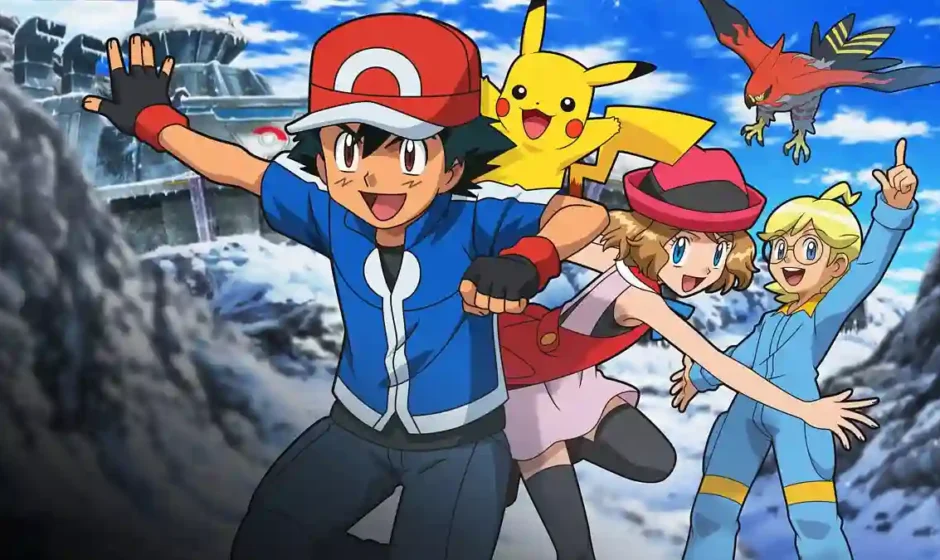The art of Manga XYZ is a visual symphony where ink serves as the conductor, shaping the lines, shadows, and details that bring the narrative to life. In this exploration of “Behind the Ink,” we take an in-depth look at the inking techniques employed in Manga XYZ, unraveling the intricacies that contribute to the medium’s visual brilliance.
1. Precision in Line Art: Defining Form and Structure
In Manga XYZ, line art is the backbone of the visual narrative. Mangaka employ precise and deliberate lines to define the form and structure of characters, environments, and objects within the story. The mastery of line weight, varying from thin delicate lines to bold strokes, creates a dynamic visual language that guides the reader’s eye and communicates depth and dimension.
2. Hatching and Cross-Hatching: Shading and Texture
Hatching and cross-hatching are fundamental inking techniques that impart shading and texture to Manga XYZ artwork. By strategically placing parallel lines (hatching) or intersecting lines (cross-hatching), mangaka create gradients of shadow and convey the texture of surfaces. This technique is particularly effective in depicting the play of light and shadow in various settings, from the intricate folds of clothing to the details of architectural elements.
3. Stippling: Creating Tone with Dots
Stippling involves the use of dots to create tones and gradients. In Manga XYZ, this technique is often employed for background elements, subtle shading, or to convey atmospheric effects. Stippling adds a level of intricacy to the artwork, allowing mangaka to achieve nuanced textures and create visually captivating scenes. The density and arrangement of dots contribute to the overall mood and atmosphere of the manga.
4. Speed Lines and Action Dynamics: Conveying Motion
Manga XYZ is renowned for its dynamic action sequences, and inking techniques play a crucial role in conveying motion and energy. Speed lines, bold strokes, and exaggerated perspectives create a sense of movement and urgency. These techniques are often used in intense action scenes, transforming static images into dynamic sequences that propel the narrative forward with a palpable sense of momentum.
5. Spotting Blacks: Enhancing Contrast and Drama
Spotting blacks involves strategically incorporating areas of solid black into the artwork. This inking technique enhances contrast, adds drama, and directs the viewer’s focus to key elements within the panel. Mangaka use spotting blacks to emphasize shadows, create dramatic lighting effects, or highlight significant details, contributing to the overall visual impact of the manga.
6. White Space Management: Balancing Light and Dark
In contrast to spotting blacks, effective white space management is essential in Manga XYZ. Mangaka carefully balance the use of black and white spaces to control the overall tonal composition. The judicious application of white space ensures that the artwork is not overwhelmed by heavy shading, allowing key elements to stand out and creating a harmonious visual flow within the panels.
7. Background Detailing: Enriching the Visual Narrative
Inking techniques are employed to add depth and detail to the backgrounds of Manga XYZ. Whether depicting urban landscapes, natural environments, or fantastical realms, mangaka use intricate lines, hatching, and stippling to enrich the visual narrative. The level of detail in backgrounds contributes to the immersive quality of the manga, creating a sense of place that enhances the reader’s engagement with the story.
8. Emotive Inking: Expressing Character Emotions
Manga XYZ is renowned for its ability to convey nuanced emotions through the artistry of inking. Mangaka use subtle changes in line weight, facial expressions, and body language to express the emotions of characters. From the delicate lines that convey a character’s vulnerability to bold strokes that express determination or rage, emotive inking adds a layer of depth to the storytelling, allowing readers to connect with the characters on a visceral level.
9. Inking Tools and Techniques: Pens, Brushes, and Beyond
The choice of inking tools is a crucial aspect of Manga XYZ. Mangaka utilize a variety of tools, including pens, brushes, nibs, and digital tools, each offering a unique texture and line quality. Some mangaka prefer the precision of pens for fine lines, while others opt for brushes to achieve expressive strokes and dynamic lines. The selection of inking tools is a personal choice that contributes to the individual style of each artist.
10. Digital Inking: Advancements in Technology
With technological advancements, many mangaka have embraced digital inking as a powerful tool in the creative process. Digital inking allows for precise control over lines, easy correction of mistakes, and the ability to experiment with a vast array of brushes and textures. While traditional inking techniques remain integral to Manga XYZ, digital tools offer artists new possibilities for exploration and innovation.
11. Inking Styles Across Genres: Shonen, Shojo, Seinen, and More
Inking styles vary across different genres within Manga XYZ. The bold, dynamic lines of Shonen manga contribute to the intensity of action scenes, while the delicate, expressive lines of Shojo manga capture the subtleties of emotion and romance. Seinen manga may employ intricate detailing and realistic shading to convey mature themes. The diverse inking styles across genres showcase the adaptability of inking techniques to suit the tone and themes of each manga.
12. Collaboration with Other Art Elements: Lettering and Tone
Inking collaborates with other art elements in Manga XYZ, such as lettering and toning. The integration of inked lines with lettering contributes to the overall visual harmony of the manga, ensuring that the text complements the artwork seamlessly. Additionally, inking interacts with toning techniques, where gray tones are used to add depth and dimension to the artwork, creating a cohesive visual experience for the reader.
Conclusion:
In conclusion, the inking techniques in Manga XYZ are a testament to the artistry behind the lines that shape the visual narrative. From precision in line art to the expressive strokes that convey emotion, mangaka employ a diverse array of inking techniques to create captivating and immersive storytelling experiences. As Manga XYZ continues to evolve, the mastery of inking remains a cornerstone of the medium’s enduring visual appeal, inviting readers into worlds where every line tells a story.



